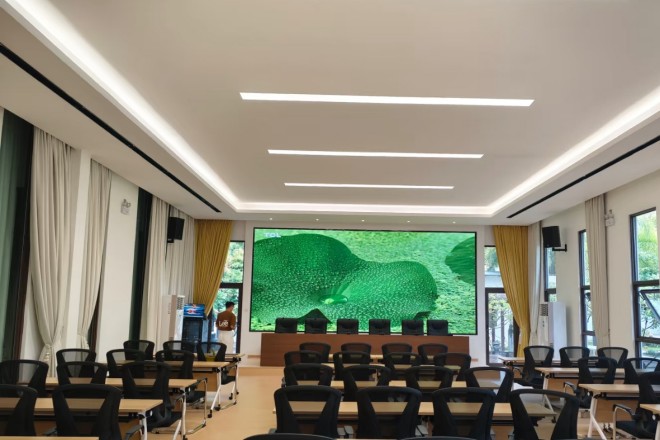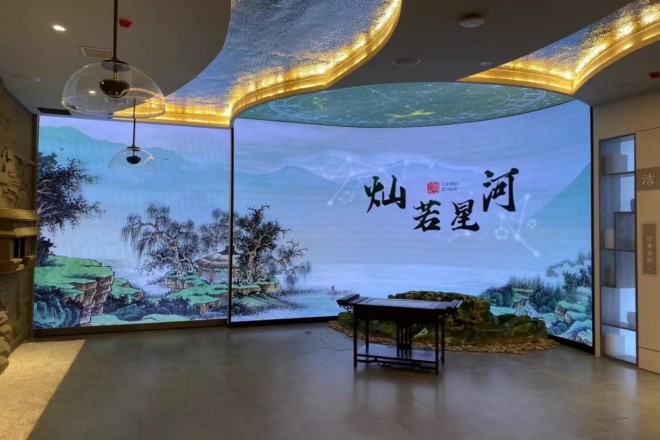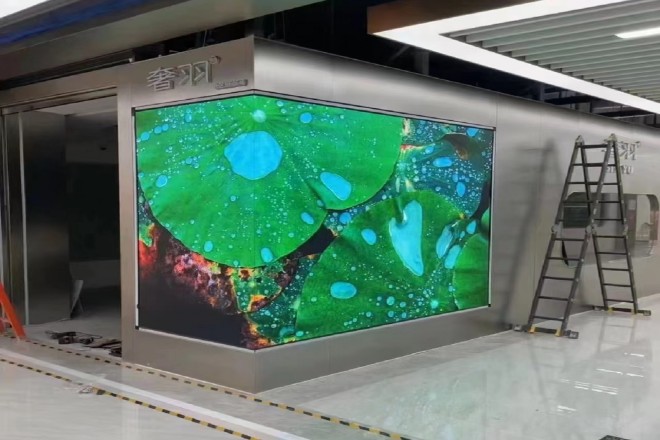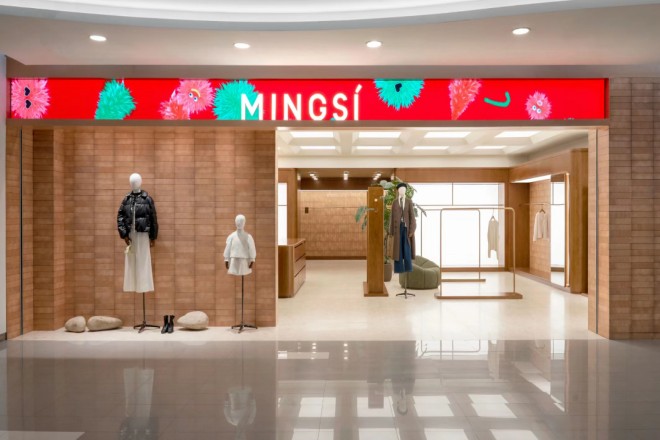序章

LEDディスプレイ are everywhere in the flood of information, delivering all kinds of information. Faced with many choices, this article provides a guide to key parameters, brands, budgets, and usage environments to help you find the ideal LED display.
1. Consider what kind of display effect you want.

When considering the desired display effect, we need to combine multiple factors to make the most suitable choice. The following is a detailed analysis and suggestions for each factor you proposed:
1). Application scenario
1.1). Indoor use:
会議室: Usually requires a high-解決, color-accurate display to clearly display PPT, charts, and text information.
展示 hall: May require a larger screen area to display images and video content while requiring bright colors and moderate brightness to adapt to different light conditions.
ホテル lobby and reception area: The screen size and location should take into account the customer’s eye level and walking path to ensure that the information is easy to notice. At the same time, it needs to support remote content updates to help hotel managers maintain information.
博物館 and art galleries: High color reproduction, able to truly reproduce the color and details of the artwork. The screen size and layout should be designed according to the size and layout of the exhibition space to ensure that the audience can watch comfortably.
Other indoor environments, such as retail stores, may require a display with flexible installation and a beautiful design.
1.2). Outdoor use:
Billboards: Require a high-輝度 and high-contrast display to ensure that the content can be clearly displayed even in daylight.
Public places, such as train stations and 空港, may require a larger screen area to attract attention while requiring the display to be durable and wind-resistant.
2). コンテンツを表示する
Text information: A high-resolution display is required to ensure that the text is clear and readable.
Graphics: In addition to high resolution, accurate colors are also required to present the details and colors in the image.
Video content: A display that supports a high refresh rate and smooth playback is required to ensure that the video content is free of lag and delay.
3). 視聴距離
クローズアップ表示: For example, the display in the conference room requires high resolution and a small pixel pitch to ensure that the audience can clearly see every detail.
遠距離視聴: For example, outdoor billboards require a larger screen area and higher brightness to ensure that the content can be clearly seen at a longer distance.
4). Ambient brightness
屋内: Usually, a particularly high brightness is not required, but accurate colors and moderate contrast are required.
屋外: A high-brightness display is required to resist direct sunlight to ensure that the content is clearly visible.
5). Waterproof and dustproof level
屋内: Usually, a particularly high waterproof and dustproof level is not required, but the display is required to have good heat dissipation performance and stability.
屋外: A waterproof and dustproof level of IP65 and above is required to ensure that the display can work normally under adverse weather conditions.
2. Understand the key parameters of LED display screens
The key parameters of LED display screens are crucial to their display effects and user experience. The following is a detailed explanation of these key parameters:
1). Resolution:
The resolution of LED display screens refers to the precision of the screen image, that is, the number of pixels that can be displayed on the display screen. It is usually expressed as the number of horizontal pixels × the number of vertical pixels.
The higher the resolution, the clearer the displayed picture and the richer the details. Choose the appropriate resolution according to the usage scenario and budget.
For example, for advertising displays in small stores, standard definition or high definition resolution may be sufficient; while for home theaters, game enthusiasts or professional image design fields, 4K or higher resolution can bring a better visual experience.
2). リフレッシュレート:
The refresh rate refers to the number of times the screen refreshes the image per second, usually in Hertz (Hz). The higher the refresh rate, the more stable and smooth the picture display, the less visual flickering, and the higher the image clarity.
For general applications, a refresh rate ≥1920Hz can meet the needs; for high-end applications, such as live sports events or professional film and television production, a refresh rate ≥3840Hz can bring a better visual experience.
3). Screen size:
Screen size refers to the diagonal length of the LED display, usually in inches or millimeters. The choice of screen size directly affects the viewing effect and user experience. Choose the appropriate screen size according to the usage scenario and viewing distance.
For example, in an indoor conference room, a smaller screen size may be more suitable for close viewing, while in an outdoor billboard, a larger screen size can attract more attention.
4). Brightness:
Brightness refers to the intensity of light emitted by the LED screen, usually in nits. The higher the brightness, the clearer the screen can be seen under strong light, ensuring the visibility of the content.
The brightness of indoor LED displays is usually between 800-1500nits, while outdoor LED displays usually have a brightness between 3000-6000nits because they need to resist direct sunlight.
3. Consider the price of the budget and the cost-effectiveness of the LED display

When considering the budget and the cost-effectiveness of the LED display, here are some suggestions:
1). Clear budget
First, you need to clarify your budget range. The price of an LED display varies according to parameters such as size, resolution, brightness, refresh rate, etc., so you need to choose the right product according to your needs and budget.
2) 費用対効果評価
- Compare different products:
Compare the performance and price of LED display screens of different brands and models within the budget. Pay attention to key parameters such as product resolution, refresh rate, brightness, pixel pitch, as well as product reputation and user evaluation.
- Consider the usage scenario:
Choose a suitable LED display screen according to the usage scenario. For example, for indoor use, you can choose a product with moderate brightness and high resolution.
For outdoor use, you need to choose a product with high brightness and good waterproof and dustproof performance.
- Pay attention to after-sales service:
Choose brands and products with good after-sales service to ensure that problems encountered during use can be solved in time.
3). Avoid blindly pursuing high prices
Although high-priced products often mean higher performance and better quality, it does not mean that all high-priced products are suitable for you.
Blindly pursuing high prices may lead to budget overspending and may not meet your actual needs. Therefore, when choosing an LED display screen, make decisions based on your actual needs and budget.
4). Recommend cost-effective products
The following are some cost-effective LED display recommendations:
4.1). Indoor use:
- Small pitch LED display:
such as P1.25, P1.5, and other specifications, the price is relatively high, but the display effect is excellent, suitable for occasions with high picture quality requirements.
- Economic LED display:
such as P4, P5, and other specifications, the price is moderate and can meet general use needs.
4.2). Outdoor use:
- High brightness LED display:
Choose products with brightness between 3000-6000nits to ensure that the content can be clearly displayed even under strong light.
- Good waterproof and dustproof performance:
Choose products with IP65 or higher protection levels to ensure normal operation in harsh environments.
4. Choice of viewing distance and size of LED display
The choice of viewing distance and size of LED display really needs to be determined according to specific application scenarios and viewing needs. Here are some suggestions:
1). Relationship between viewing distance and pixel pitch
1.1). P4 display (dot pitch 4mm):
- Optimal viewing distance:
About 4 meters to 10 meters.Within this distance range, the audience can clearly distinguish details on the screen, such as text and images.
As the viewing distance increases, the audience’s visual experience will also improve, but at a distance of more than 10 meters, the recognizability of details may decrease.
1.2). Display screens with other pixel pitches:
- P1 to P3 displays:
These displays have a smaller dot pitch and are suitable for close viewing.
For example, LED screens with P1.2-P1.5 are suitable for medium-sized conference rooms, with an optimal viewing distance of about 1.5 to 3 meters.
P2.0-P2.5 are suitable for large exhibition spaces, with an optimal viewing distance of between 3 and 5 meters.
- Display screens with P5 and above:
These displays have a larger dot pitch and are suitable for long-distance viewing. For example, outdoor billboards or displays in large public places, where the audience usually watches from a distance, can choose a lower-cost large-pitch specification.
2). Selection of screen size
- Determine the screen size based on the viewing distance:
The closer the viewing distance, the smaller the screen size required; the farther the viewing distance, the larger the screen size required. This is to ensure that the audience can clearly see the content on the screen at any distance.
3). Consider the application scenario:
- Indoor use:
Such as conference rooms, exhibition halls, etc., the screen size can be determined according to the size and layout of the room. Generally speaking, the screen size should be large enough so that all viewers can clearly see the content on the screen.
- Outdoor use:
Uuch as billboards, display screens in public places, etc., the screen size should be large enough to attract the audience’s attention. At the same time, the installation position and height of the screen also need to be considered to ensure that the audience can see the content on the screen at any angle.
4). Consider resolution and pixel pitch:
Screen size also needs to consider resolution and pixel pitch. High resolution and smaller pixel pitch can provide clearer images and more details. Therefore, when choosing the screen size, it is necessary to ensure that the resolution and pixel pitch of the selected screen can meet the viewing needs.
5. Finally, about the cost and budget of LED display screens

The following is a detailed analysis of the cost and budget optimization of LED display screens:
1). Optimization of initial investment
- Reasonable selection of size and resolution
According to the actual application scenario and viewing distance, reasonably select the size and resolution of the LED display screen.
Although large-size, high-resolution display screens have better visual effects, they are also more expensive. Therefore, under the premise of meeting viewing needs, try to choose products with high-cost performance.
- Consider brightness and energy-saving technology.
Brightness is one of the important factors affecting the price of LED display screens. For indoor display screens, you can choose products with lower brightness.
For outdoor display screens, you need to consider high-brightness products to ensure a clear display even under strong light. At the same time, you can pay attention to display screens with energy-saving technology to reduce energy consumption and electricity expenses.
- Compare different brands and suppliers.
The prices of LED display screens from different brands and suppliers may vary. Therefore, before purchasing, you can compare the product performance, price, and service of different brands and suppliers to choose the most cost-effective product.
2). Optimize operating costs
- Strengthen maintenance management
Regularly clean, inspect and repair the LED display screen, and promptly discover and solve problems, which can extend the service life of the display screen and reduce maintenance costs.
At the same time, establishing maintenance files and records will help track the use and maintenance history of the display screen.
- Reasonably arrange the use time.
According to actual needs, reasonably arrange the use time of the LED display screen to avoid unnecessary waste. For example, at night or in a dimly lit environment, the brightness of the display screen can be reduced to save energy.
- Consider leasing or sharing mode.
For projects with short-term use or a limited budget, you can consider leasing or sharing LED display screens. This can reduce the initial investment cost and flexibly adjust the use time and quantity of the display according to actual needs.
結論
Choosing an LED display requires rational analysis and emotional experience. Choose the most suitable one according to the scene, technology, budget, and brand.
There is no best, only the most suitable. Compare more, understand the product, and even experience it yourself. I am looking forward to you creating a visual feast with an LED display.
最後に、LEDディスプレイについてもっと知りたい方は、 ご連絡ください。
